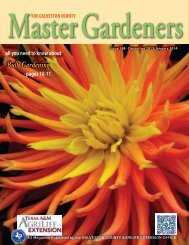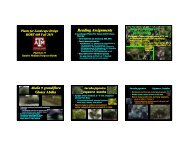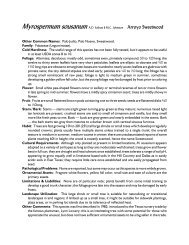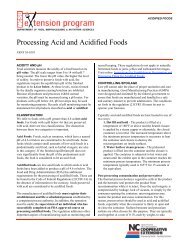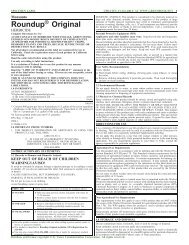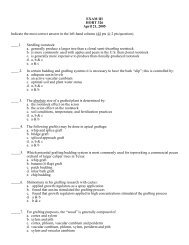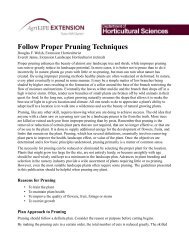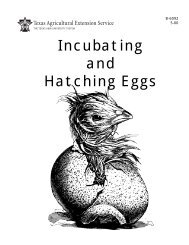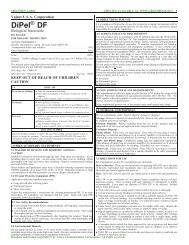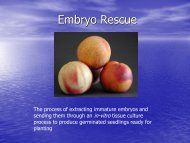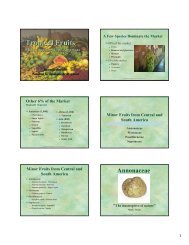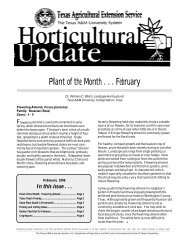Guide to PAS 2050 How to assess the carbon ... - Aggie Horticulture
Guide to PAS 2050 How to assess the carbon ... - Aggie Horticulture
Guide to PAS 2050 How to assess the carbon ... - Aggie Horticulture
Create successful ePaper yourself
Turn your PDF publications into a flip-book with our unique Google optimized e-Paper software.
<strong>Guide</strong> <strong>to</strong> <strong>PAS</strong> <strong>2050</strong> 55<br />
Appendix IV<br />
Uncertainty<br />
analysis<br />
With zero uncertainty, <strong>the</strong>re is no variation in <strong>the</strong><br />
<strong>carbon</strong> footprint <strong>assess</strong>ments (illustrated below, left). In<br />
this ideal scenario, <strong>the</strong> two product footprints can be<br />
compared, and users of <strong>the</strong> footprint information can<br />
be confident <strong>the</strong>ir decisions are based on accurate<br />
data.<br />
<strong>How</strong>ever, uncertainty creates challenges for comparisons<br />
and decision making as illustrated below, right.<br />
Uncertainty in <strong>carbon</strong> footprinting comes from two<br />
sources: technical uncertainty and natural variability.<br />
Technical uncertainty is created by limited data quality,<br />
ineffective sampling, wrong assumptions, incomplete<br />
modelling and o<strong>the</strong>r flaws in <strong>the</strong> footprint calculation<br />
itself. These fac<strong>to</strong>rs are analysed in <strong>the</strong> uncertainty<br />
calculation described overleaf. Natural variability is<br />
Probability of footprint value<br />
1<br />
Zero uncertainty<br />
400<br />
Product A<br />
Footprint (g CO 2 e)<br />
600<br />
Product B<br />
accounted for in <strong>the</strong> definition of a product <strong>carbon</strong><br />
footprint as an average, or representative figure, so it<br />
does not need <strong>to</strong> be quantified.<br />
Because <strong>the</strong> nature of a footprint calculation involves<br />
estimates and judgement, every model input has some<br />
degree of uncertainty associated with it. Each input<br />
has a probability distribution around <strong>the</strong> mean value,<br />
or <strong>the</strong> number used in <strong>the</strong> model. The distribution<br />
curves can take any shape, e.g. normal (as in <strong>the</strong><br />
example below).<br />
Probability of footprint value<br />
200 400 500 600 700<br />
Footprint (g CO 2 e)<br />
Uncertainty in this example is <strong>the</strong> value along <strong>the</strong><br />
x-axis greater or less than <strong>the</strong> products’ footprint<br />
estimates of 400 and 600.<br />
Product A<br />
Product B<br />
Product A has greater uncertainty than Product B.<br />
Higher uncertainty in footprint result = lower<br />
confidence in comparisons



